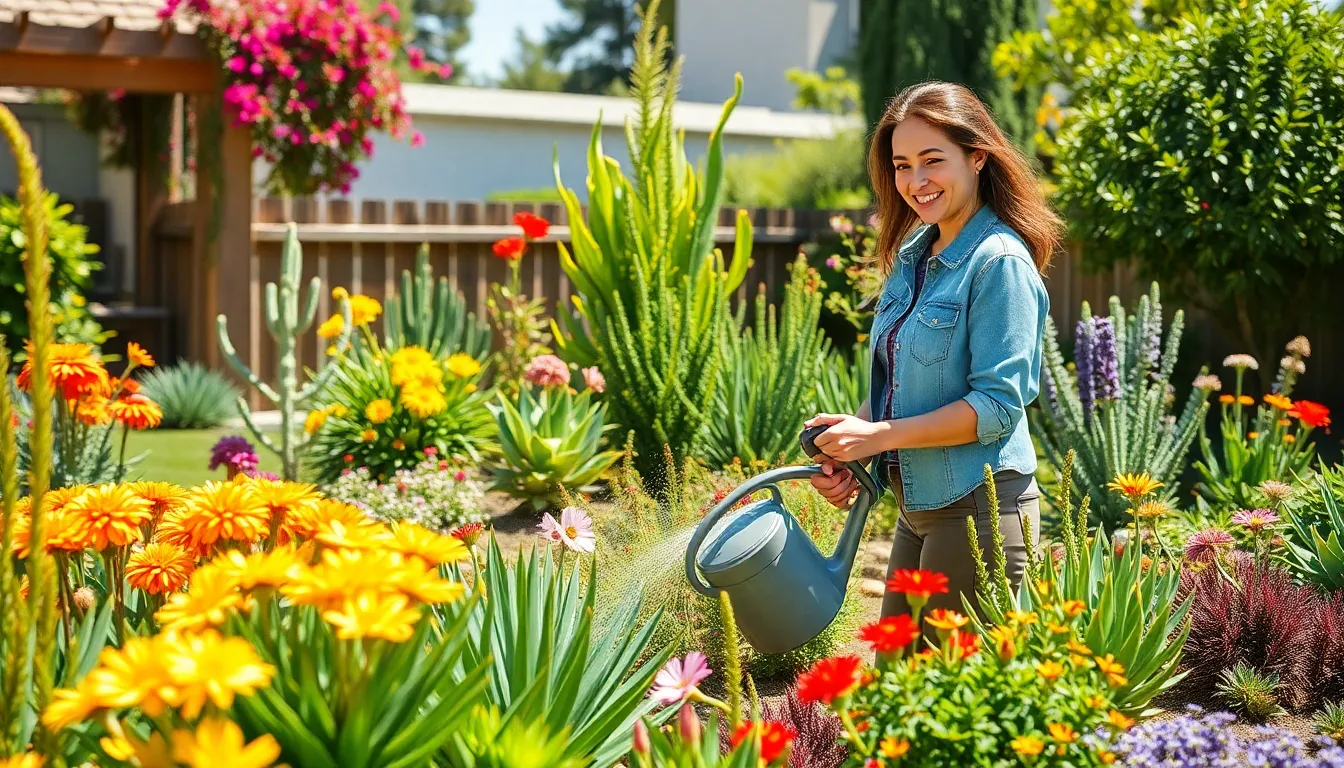Table of Contents
ToggleIn a world where plastic bags are more common than reusable ones and energy drinks seem to power half the planet, going green at home might feel like an uphill battle. But fear not! Embracing eco-friendly habits doesn’t mean you have to live like a hermit in a treehouse. It’s all about making small, smart choices that can lead to a big impact.
Benefits Of Going Green At Home
Adopting eco-friendly practices at home offers numerous advantages that extend beyond individual households. While personal lifestyle adjustments play a significant role, the collective efforts contribute to broader environmental change.
Environmental Impact
Reducing household energy consumption leads to lower greenhouse gas emissions. By using energy-efficient appliances, families significantly cut their electricity use, which decreases the demand for fossil fuels. Implementing recycling practices directly reduces landfill waste and encourages material reuse, fostering a circular economy. Choosing to conserve water with simple fixes, like installing low-flow fixtures, contributes to resource preservation. Planting trees or maintaining home gardens supports local biodiversity and improves air quality, promoting healthy ecosystems.
Health Advantages
Opting for natural cleaning products minimizes exposure to harmful chemicals. Cleaner indoor air results when households eliminate toxins, leading to fewer allergies and respiratory issues. Installing proper ventilation systems enhances air quality, promoting better overall health. Eating locally sourced foods not only supports local farmers but also provides fresher options, rich in nutrients. Creating green spaces at home, like gardens, lowers stress levels and boosts mental well-being, contributing to healthier lifestyle choices.
Simple Ways To Go Green At Home

Adopting eco-friendly practices at home enhances both the environment and personal well-being. Here are some straightforward strategies to implement.
Energy Efficiency
Switching to energy-efficient appliances can lead to significant savings on utility bills. LED bulbs consume up to 80% less energy than traditional incandescent options, making them a smart choice for lighting. Utilizing programmable thermostats helps regulate home temperatures, ensuring optimal heating and cooling when needed. Unplugging devices when not in use prevents energy waste, contributing to lower overall consumption. Ensuring proper insulation reduces the need for heating and cooling, further enhancing energy efficiency.
Water Conservation
Collecting rainwater in barrels provides a sustainable source for outdoor watering. Installing low-flow faucets and showerheads can reduce water usage by approximately 30%, maintaining effective water pressure. Regularly checking for leaks leads to timely repairs, preventing unnecessary water loss. Choosing drought-resistant plants for landscaping minimizes the need for frequent watering, conserving precious resources. Implementing a rain garden captures runoff and promotes groundwater recharge, benefiting both the environment and local ecology.
Sustainable Practices For The Household
Implementing sustainable practices at home creates a positive impact on the environment. Households can contribute to sustainability through effective recycling and composting methods.
Recycling And Composting
Recycling helps divert waste from landfills. By separating paper, plastic, glass, and metal, families support recycling facilities. Composting transforms kitchen scraps and yard waste into nutrient-rich soil, enhancing gardens. Families can use compost bins to create their own compost while reducing landfill contributions. Municipal composting programs offer additional support for those unable to compost at home. Producing less waste significantly lowers greenhouse gas emissions, leading to a cleaner environment.
Using Eco-Friendly Products
Choosing eco-friendly products reduces exposure to harmful chemicals. Cleaning with natural solutions minimizes toxins released into the air. Families can select biodegradable cleaning supplies, which break down naturally and lessen environmental impact. When shopping for personal care items, opting for organic and cruelty-free brands supports sustainable practices. Ingredients sourced from nature often provide healthier alternatives. Moreover, using reusable bags and containers decreases plastic waste and encourages responsible consumption. Each small choice adds up, fostering a healthier planet.
Creating A Green Home Environment
Creating a green home environment enhances sustainability and promotes well-being. Simple adjustments lead to significant improvements.
Indoor Plants
Indoor plants improve air quality while bringing a touch of nature indoors. These plants absorb toxins and release oxygen, creating a healthier atmosphere. Varieties like spider plants, peace lilies, and snake plants thrive in low light, making them ideal for homes. Regularly caring for plants fosters a sense of responsibility and mindfulness. Besides aesthetic appeal, incorporating plants can boost mood and reduce stress, contributing to a balanced living space.
Sustainable Decor Options
Choosing sustainable decor options elevates home aesthetics while minimizing environmental impact. Consider materials like reclaimed wood, bamboo, and recycled metal for furniture and accessories. Artisans often craft these items from eco-friendly sources, ensuring minimal waste. Decorative pieces made from natural fibers, such as jute or organic cotton, also support sustainability. Selecting secondhand items not only reduces resource consumption but also adds character to spaces. Ultimately, sustainable decor reflects personal values while fostering a stylish, green environment.
Embracing eco-friendly habits at home is an achievable goal that brings numerous benefits. By making small changes like switching to energy-efficient appliances or adopting sustainable practices, individuals can significantly impact the environment. These choices not only reduce waste and conserve resources but also enhance personal well-being.
Creating a green home environment fosters a sense of community and responsibility. It encourages healthier lifestyles and promotes mindfulness through simple adjustments like adding indoor plants or choosing sustainable decor. Every effort counts in the journey toward a more sustainable future. With commitment and creativity, anyone can contribute to a healthier planet while enjoying the many advantages of a greener lifestyle.







